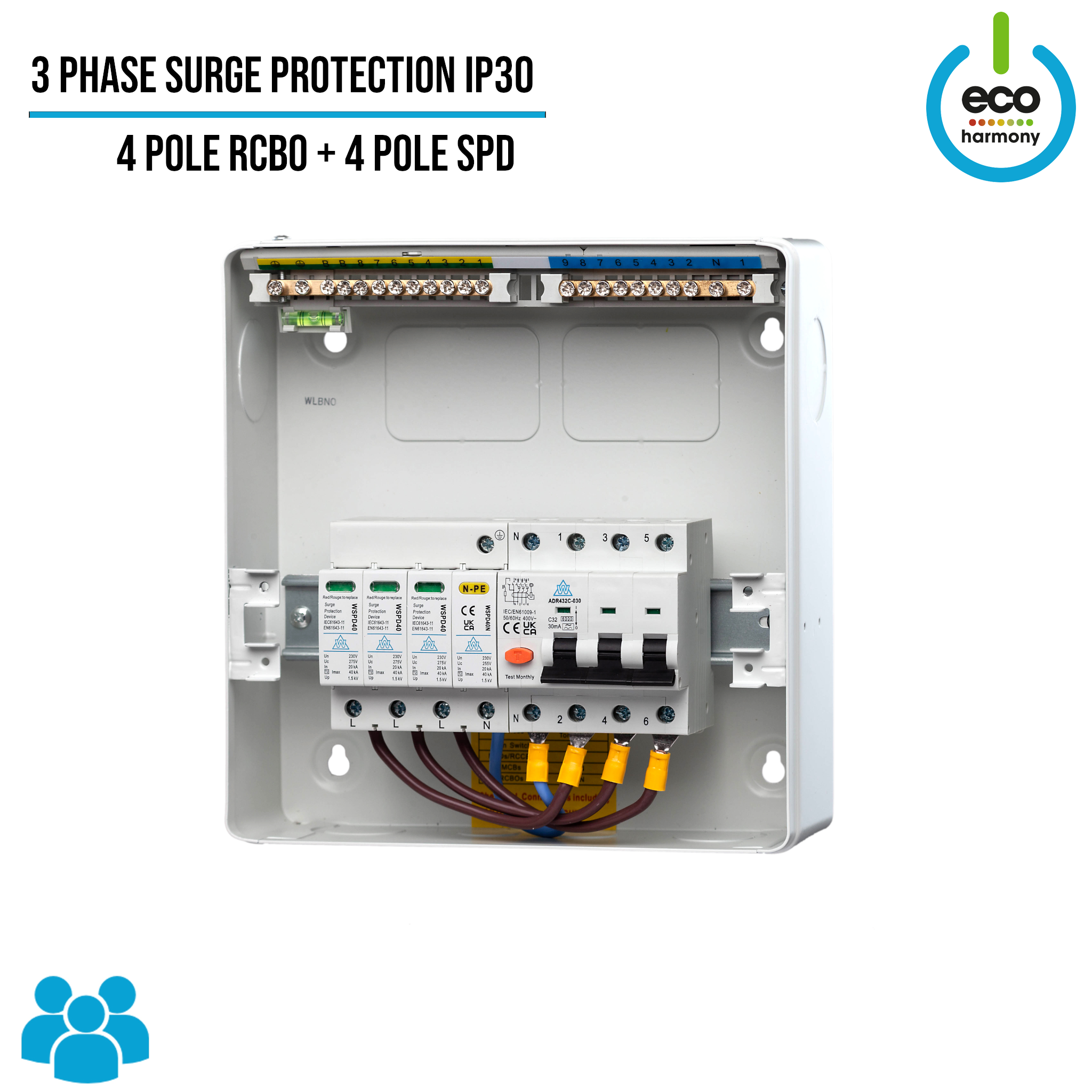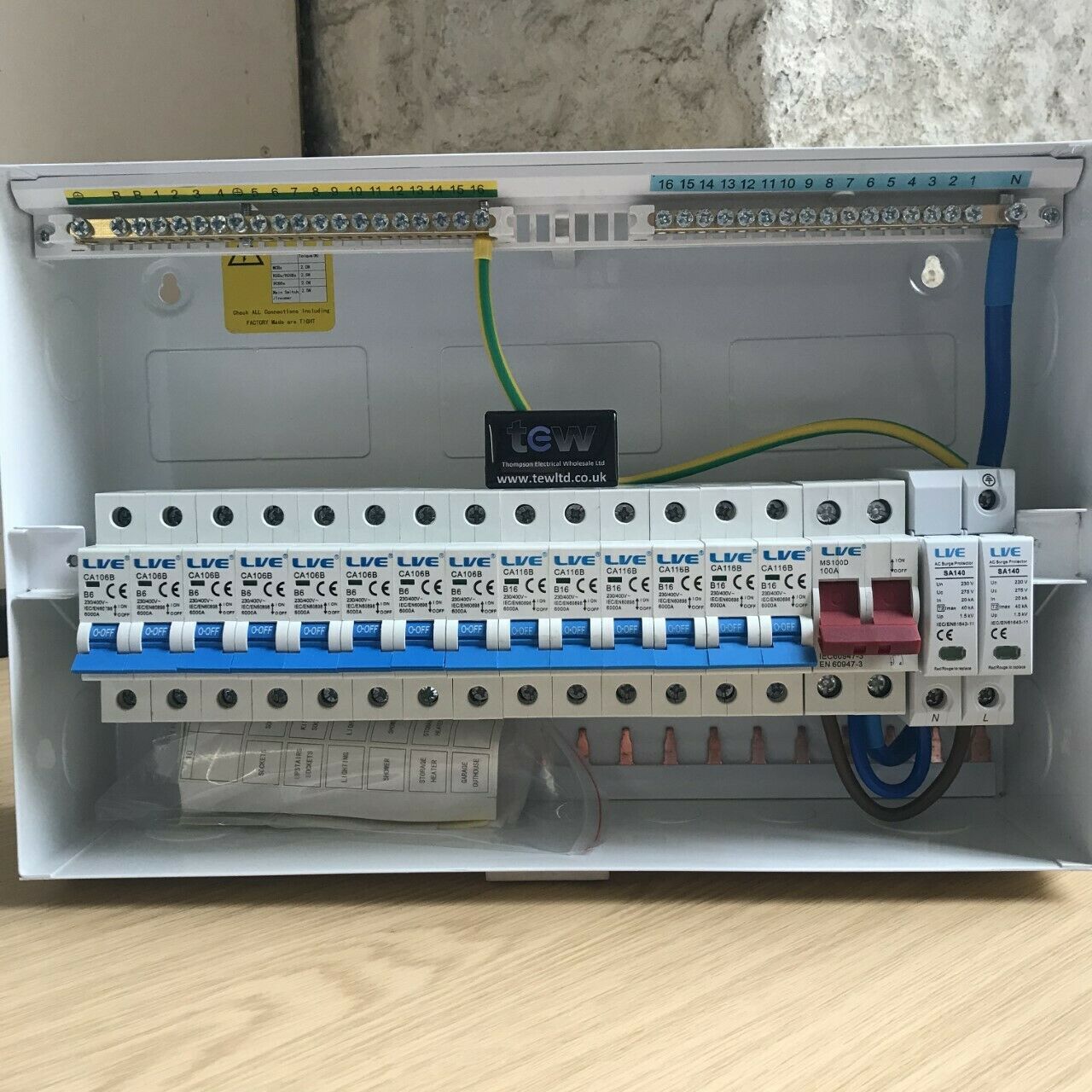Checking Out the most recent Innovations in RCBO CONSUMER UNITS Innovation
Checking Out the most recent Innovations in RCBO CONSUMER UNITS Innovation
Blog Article
The Value of Updating Your Consumer Units for Enhanced Safety
In today's ever-evolving landscape of electric safety, upgrading your customer units is not just an issue of comfort yet a vital step towards securing your home. As electric needs expand and safety and security laws tighten, counting on obsolete units can posture serious threats.
Understanding Consumer Units
Consumer systems, typically referred to as circuit box or distribution boards, are critical parts in residential electric systems. These systems offer as the main hub for electric circulation within a house, making sure that power is efficiently and securely dispersed to numerous circuits throughout the property. The key function of a customer device is to house breaker or integrates that protect electrical circuits from overloads or brief circuits, which can potentially lead to fires or damages to electric home appliances.
A regular customer system consists of numerous crucial elements: a primary button, several circuit breakers, and recurring existing devices (RCDs) Circuit breakers act as safety tools that instantly reduced off the electric flow when an overload or fault is spotted in the circuit.
Understanding the necessary duty of customer systems is critical for maintaining electrical safety and security and reliability in homes. Proper setup and routine maintenance of these units are vital to make certain optimum efficiency and protection against electrical risks.
Benefits of Modern Devices
Modern customer systems use a plethora of advantages that substantially enhance electric safety and effectiveness in household homes. One of the key advantages is the consolidation of Residual Current Tools (RCDs) and Miniature Circuit Breakers (MCBs), which offer a higher level of protection against electrical faults.
In addition to safety and security features, contemporary systems additionally enhance power efficiency. Advanced modern technology permits much better monitoring and monitoring of electric tons, reducing energy wastefulness and assisting homeowners to reduce their utility bills. They are also created to suit future upgrades, making it easier to incorporate renewable energy sources such as solar panels into the home's electric system.
Additionally, modern customer units are constructed to follow the current electrical guidelines and standards, ensuring that setups satisfy present security requirements. This conformity not just gives satisfaction yet can likewise improve the home's value and attract prospective buyers.
Identifying Outdated Units
A vital facet of boosting electrical safety and security in homes is the identification of out-of-date customer devices. Recognizing these older units is crucial as they frequently lack modern-day safety features and can position significant hazards. Normally, obsolete consumer devices can be identified by their construction products and design. Systems with a wood backboard, rewireable integrates, or no Residual Current Gadget (RCD) protection are prime prospects for replacement. These older versions may likewise feature ceramic merges or a lack of breaker, showing they are not up to current safety standards.
In addition to physical indicators, the age of the system itself can be a significant factor. Customer systems older than 25 years are generally considered obsolete and much less reputable. This timeframe lines up with innovations in electric safety and security criteria and the introduction of more robust defense mechanisms. RCBO CONSUMER UNITS. Homeowners need to also watch out for any type of indicators of damage, such as frayed cables, scorched elements, or regular tripping of circuits, which can indicate underlying issues.
Expert assessment by a qualified electrical expert is advised to accurately identify the problem of a current customer device. Identifying these obsolete systems is the first step toward making certain a much safer living setting.
Trick Safety And Security Attributes
Identifying out-of-date customer systems is just the initial step; recognizing the crucial safety and security functions of modern-day systems is essential for making certain a secure electrical system. Contemporary consumer systems are designed with sophisticated safety and security mechanisms to minimize the dangers of electrical fires, shocks, and various other dangers. One of one of the most critical attributes is the Residual Current Tool (RCD), which quickly disconnects the circuit if it finds an inequality, therefore safeguarding against electric shocks and fire dangers.
Furthermore, breaker are now more innovative, offering individual security for various circuits. This segmentation not just improves safety by separating faults yet likewise makes upkeep more workable. Another critical function is the Surge Defense Device (SPD), which safeguards home appliances and the electric system from voltage spikes brought on by lightning or various other electrical anomalies.
Modern customer systems are likewise made with non-combustible products, including an added layer of fire resistance (RCBO CONSUMER UNITS). Improved labeling and modular styles make it less complicated for electricians to perform evaluations and upgrades, ensuring long-term safety and security and compliance with current guidelines. By integrating these key safety functions, modern-day customer systems supply robust security, making organizations and homes significantly more secure

Picking the Right Upgrade
Picking the proper upgrade for your customer device is an important choice that directly influences the safety and security and effectiveness of your electrical system. The very first action in this process entails assessing the specific electrical needs of your home or service.
When choosing an upgrade, prioritize units furnished with Residual Current you could try this out Tools (RCDs) and Miniature Circuit see this here Breakers (MCBs) These components provide improved protection by promptly disconnecting electric circuits throughout mistakes, hence decreasing the risk of electrical fires and accidents. Additionally, take into consideration opting for Arc Fault Detection Devices (AFDDs) for included security against arc faults.
Quality and compliance with existing guidelines are critical. Make certain the customer device meets the most up to date criteria detailed by the International Electrotechnical Compensation (IEC) This ensures not only security however also integrity and longevity.
Final Thought
Updating consumer systems is vital for ensuring home security, regulatory compliance, and energy efficiency. Modern devices outfitted with RCDs and MCBs use exceptional protection versus electrical mistakes, lowering the danger of electric shock and fire dangers. Out-of-date systems might pose substantial safety risks as a result of inadequate protective devices. Buying contemporary consumer units not just enhances precaution but likewise includes worth to the residential or commercial property, straightening with advancing electric demands and requirements.

Modern customer systems supply a multitude of advantages that substantially boost electric safety and security and performance in household homes.A crucial aspect of improving electric security in residential buildings is the recognition of out-of-date consumer moved here devices.Identifying obsolete consumer units is only the first step; understanding the essential safety functions of contemporary devices is important for making sure a secure electrical system. Spending in modern consumer units not only enhances safety and security measures yet additionally adds value to the building, aligning with advancing electrical demands and requirements.
Report this page